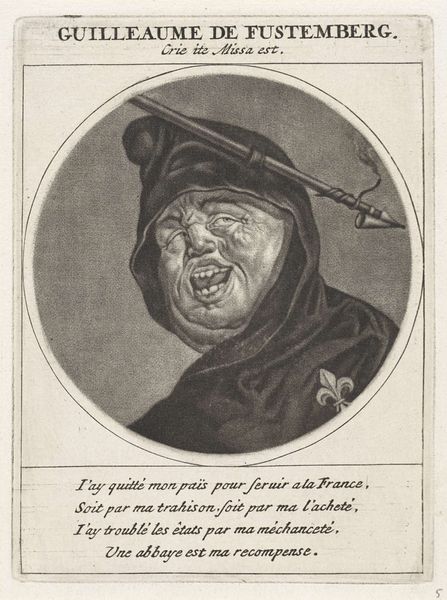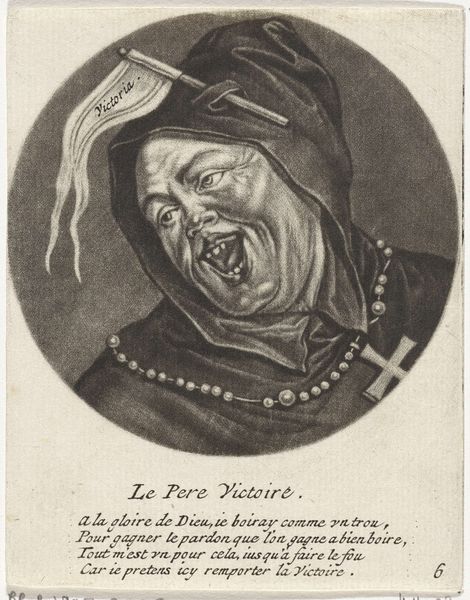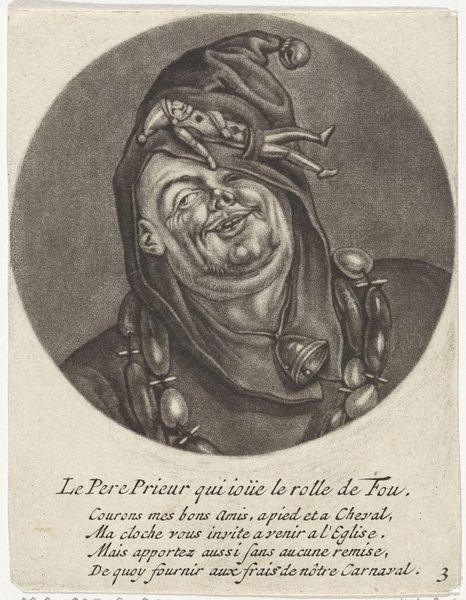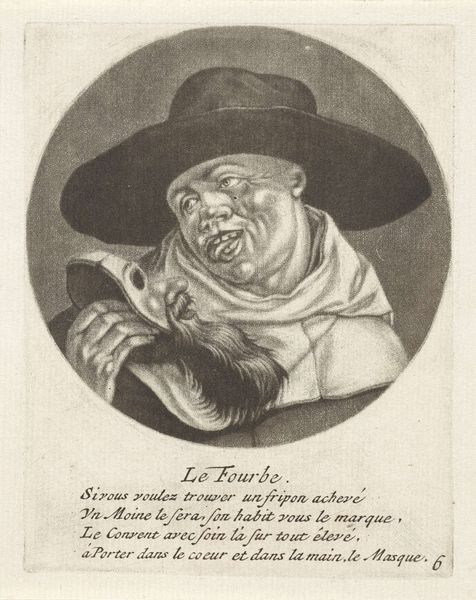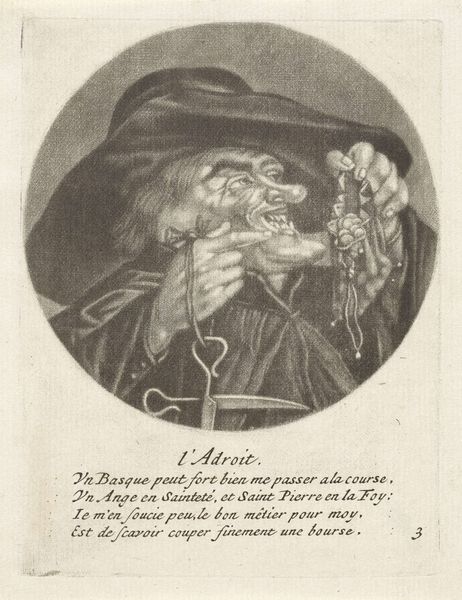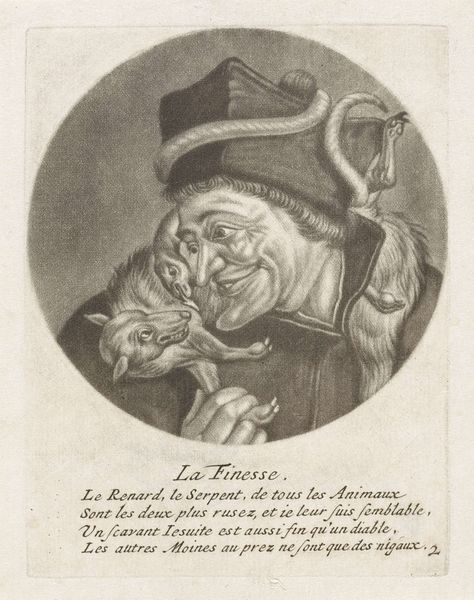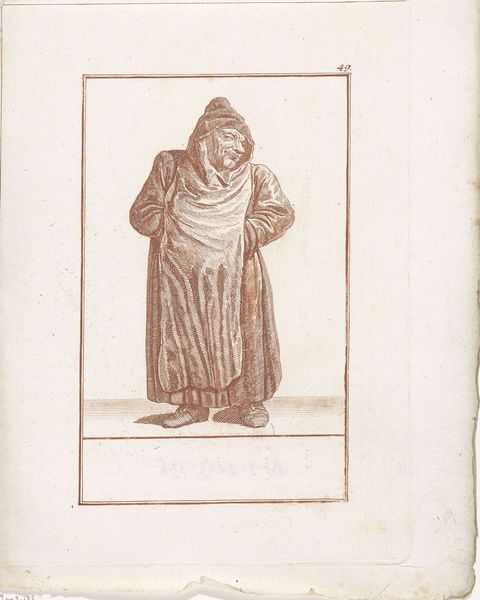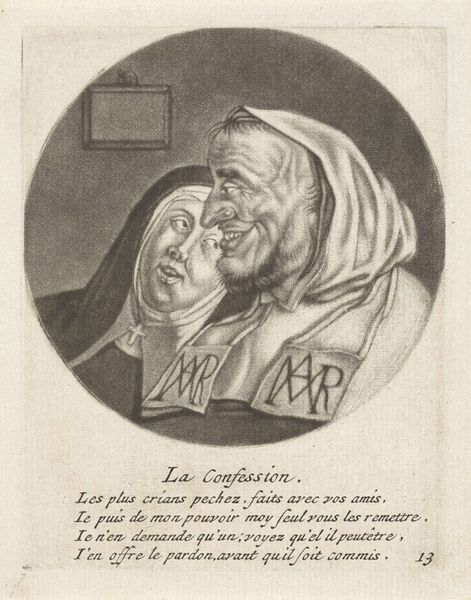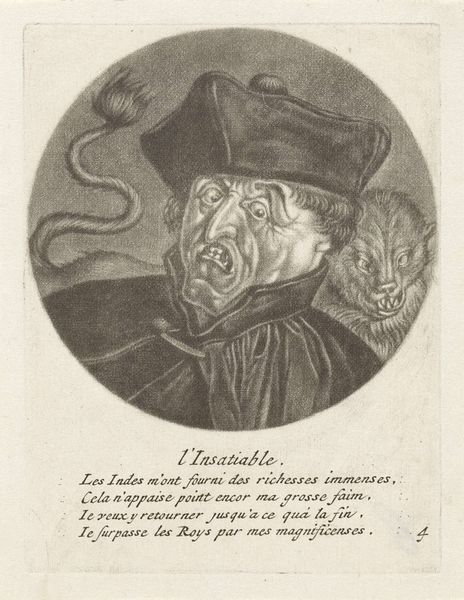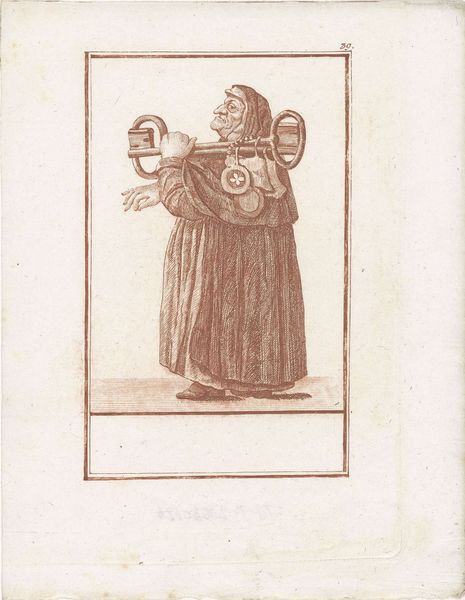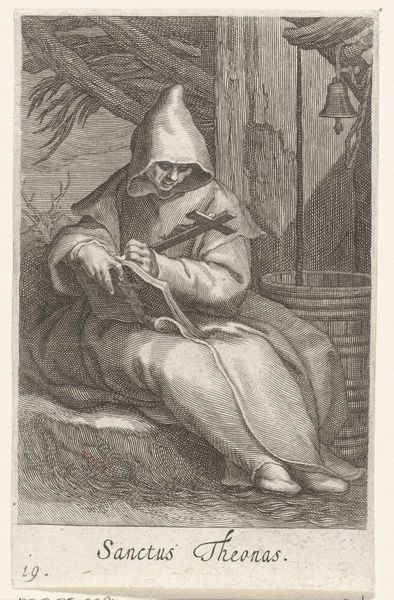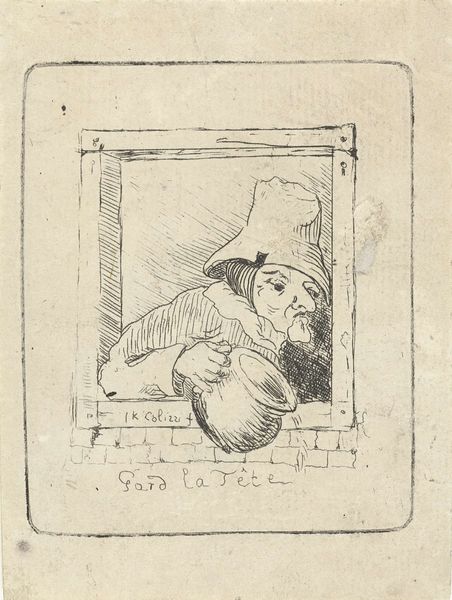
print, engraving
#
baroque
# print
#
caricature
#
history-painting
#
engraving
Dimensions: height 115 mm, width 90 mm
Copyright: Rijks Museum: Open Domain
Curator: Good day. We are in Gallery 23 at the Rijksmuseum, and we’re looking at "Monnik met een beeld van Maria" – "Monk with a Statue of Mary," an engraving possibly dating from 1670 to 1724, by Jacob Gole. Editor: What strikes me immediately is the unsettling, almost grotesque expression on the monk's face, juxtaposed with the serene figure of the Madonna. It's immediately intriguing and kind of…off-putting? Curator: Precisely! This piece likely functions as a critique of religious practices. Gole, working in a time of religious and political upheaval, often used his prints to comment on the perceived hypocrisy within religious institutions. The exaggerated features of the monk – that sly, avaricious grin – clearly suggest a skepticism toward the man's pious façade. Editor: So, it's a caricature then? The monk looks like he's scheming, like he sees the Virgin Mary as a means to an end. It is powerful to think that he created this work at this time because he might have experienced first hand all that religious upheaval. Curator: Absolutely. The inclusion of the French text below further supports this interpretation, hinting at financial gain from idol worship. "I shall adore them, but understand me well; if I can get some double pistoles from it." It's a not-so-subtle jab at the commodification of faith. The piece is commentary on a particular facet of the Baroque's emphasis on grand displays, with all their worldly trappings. Editor: It is interesting how Gole rendered the monk's robe with so much texture, almost dirt-like, which only enhances that slightly repugnant expression. The Madonna, in contrast, appears quite smooth, though a little severe – a stark contrast. Curator: A point well taken. Gole's clever deployment of engraving techniques is paramount. The detail in the facial expressions is incredible, bringing the satirical intent to the forefront. By looking at the print in its historic context we can appreciate the artist's skill in creating a piece ripe with satirical intent. Editor: What a powerful statement rendered in a relatively small, understated engraving. Food for thought, indeed! Curator: Indeed. The image invites us to reconsider the motives behind outwardly pious acts, something just as relevant today as it was centuries ago.
Comments
No comments
Be the first to comment and join the conversation on the ultimate creative platform.
